
Top 10 Most Recommended Best VTOL Aircraft Airplane UAV Drone in 2024
Top 10 Most Recommended Best VTOL Aircraft Airplane UAV Drone in 2024
Introduction
The realm of aviation has witnessed a significant evolution with the advancement of Vertical Take-Off and Landing (VTOL) technology. As we step into 2024, VTOL aircraft have become pivotal in various sectors, ranging from commercial logistics to aerial surveying and beyond. This comprehensive guide aims to elucidate the intricacies of VTOL technology, offering insights into the selection, operation, and applications of these innovative aircraft. Additionally, we present an in-depth analysis of the top 10 VTOL aircraft recommended this year, based on their performance, features, and user reviews.
Buy VTOL Aircraft Drone: https://rcdrone.top/collections/vtol-drone
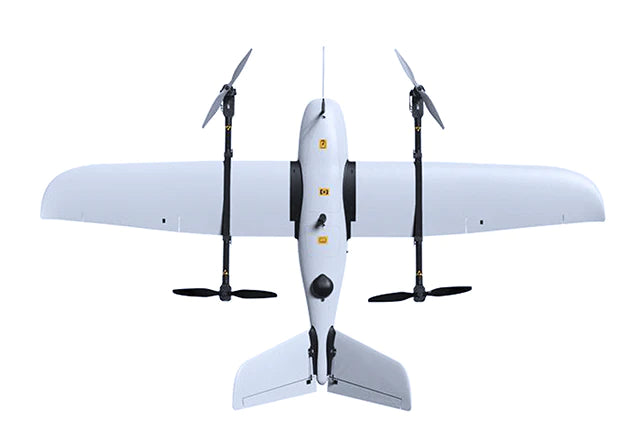
Section 1: Understanding VTOL Aircraft
Definition of VTOL Aircraft
VTOL aircraft are a type of aircraft that can take off, hover, and land vertically. This unique capability sets them apart from traditional aircraft, which require runways for take-off and landing. VTOL technology combines the agility of helicopters with the speed and range of fixed-wing planes, making these aircraft highly versatile.
Composition and Working Principles
VTOL aircraft are typically composed of several key components:
- Lift Systems: These include rotors, propellers, or jet engines that provide the necessary thrust for vertical take-off and landing.
- Control Systems: Advanced gyroscopes and flight control software are integral for stability and maneuverability during vertical and horizontal flight phases.
- Structural Elements: The aircraft's body, wings, and tail are designed to optimize aerodynamic efficiency and stability.
The working principle of VTOL aircraft revolves around the generation of sufficient lift force to overcome gravity without the need for forward motion. This is achieved through the lift systems, which can be oriented vertically for take-off and landing, and horizontally for forward flight.
Core Parameters
When evaluating VTOL aircraft, several core parameters are crucial:
- Range: The maximum distance the aircraft can travel on a single fuel or battery charge.
- Payload Capacity: The weight the aircraft can carry in addition to its own weight.
- Speed: The maximum speed the aircraft can achieve during flight.
- Endurance: The maximum duration the aircraft can stay airborne.
Section 2: How to Select a VTOL Aircraft
Selecting the right VTOL aircraft hinges on understanding specific requirements and the features each model offers. Here are the key factors to consider:
-
Purpose and Application: Define the primary use of the VTOL aircraft. Whether it's for commercial delivery, aerial surveying, or recreational purposes, the choice of aircraft will vary significantly based on its intended use.
-
Payload Capacity: Consider the weight of the cargo or equipment the aircraft needs to carry. This is crucial for applications like surveying, where the aircraft may need to carry sophisticated sensors or cameras.
-
Flight Range and Endurance: Determine how far and how long the aircraft needs to fly. Longer range and endurance are essential for tasks like environmental monitoring or extended survey missions.
-
Durability and Maintenance: Assess the build quality and maintenance requirements. A robust design is preferable for frequent use or operation in challenging environments.
-
Budget and Cost of Operation: Factor in the initial purchase cost and ongoing expenses such as maintenance, repairs, and fuel or battery costs.
Section 3: Operating and Using VTOL Aircraft
Operating a VTOL aircraft requires a blend of knowledge and skill. Here are the essentials:
-
Basic Operation Principles: Understanding the flight dynamics of VTOL aircraft, including takeoff, hovering, transitioning to forward flight, and landing, is crucial.
-
Safety Guidelines and Regulatory Compliance: Adhere to aviation safety standards and local regulations governing the use of VTOL aircraft.
-
Training Requirements: Pilots should undergo proper training to handle the unique aspects of VTOL flight, especially for complex models designed for commercial or specialized tasks.
Section 4: Application Scenarios
VTOL aircraft are versatile and find applications in various fields:
-
Commercial Delivery and Logistics: Used for transporting goods, especially in areas with challenging terrain or where rapid delivery is essential.
-
Aerial Surveying and Mapping: Ideal for collecting geographical and environmental data over large areas.
-
Search and Rescue Operations: Play a critical role in emergency response, capable of reaching remote or inaccessible areas quickly.
-
Military and Defense Applications: Employed for reconnaissance, surveillance, and rapid deployment of personnel or equipment.
Section 5: In-Depth Analysis of Top 10 VTOL Aircraft in 2024
-
Makeflyeasy Freeman 2300
The Freeman 2300 is a remarkable VTOL fixed-wing aircraft, known for its efficiency and stability in aerial survey missions.
-
Basic Parameters:
- Material: EPO+ABS+Carbon Fiber
- Wingspan: 2300mm
- Fuselage: 1070mm
- Payload: Recommended 1kg, Maximum take-off weight 8kg
-
Flight Characteristics:
- Take-off and Landing: VTOL
- Range: 80km with 1000g load
- Flight Time: 80 minutes
- Wind Resistance: Class 5
-
Features:
- Efficient aerodynamics with an optimized layout
- Tool-less quick-release structure for wings and tail
- IPX3 waterproof level
- Large fuselage cabin
-
Pros:
- High endurance and payload capacity
- Stable flight characteristics in various weather conditions
- Easy to assemble and disassemble
-
Cons:
- Relatively large size may require ample storage and transport space
-
Buy URL: Makeflyeasy Freeman 2300
-

-
Makeflyeasy Striver (VTOL Version)
The Striver is known for its long-range capabilities and robust design, making it ideal for extensive surveying tasks.
-
Basic Parameters:
- Material: EPO, EVA, carbon fiber, etc.
- Wingspan: 2100mm
- Payload: Max 1kg
- Disassembly: Tool-less quick disassembly
-
Flight Characteristics:
- Range: 127km
- Flight Time: 112 minutes
- Wind Resistance: Class 5
- Cruising Speed: 18-21m/s
-
Features:
- High endurance and excellent wind resistance
- Large load compartment for various payloads
- Efficient design for stable flight
-
Pros and Cons: Similar in many ways to the Freeman 2300, with a slightly shorter wingspan and different material composition.
-
Buy URL: Makeflyeasy Striver VTOL
-
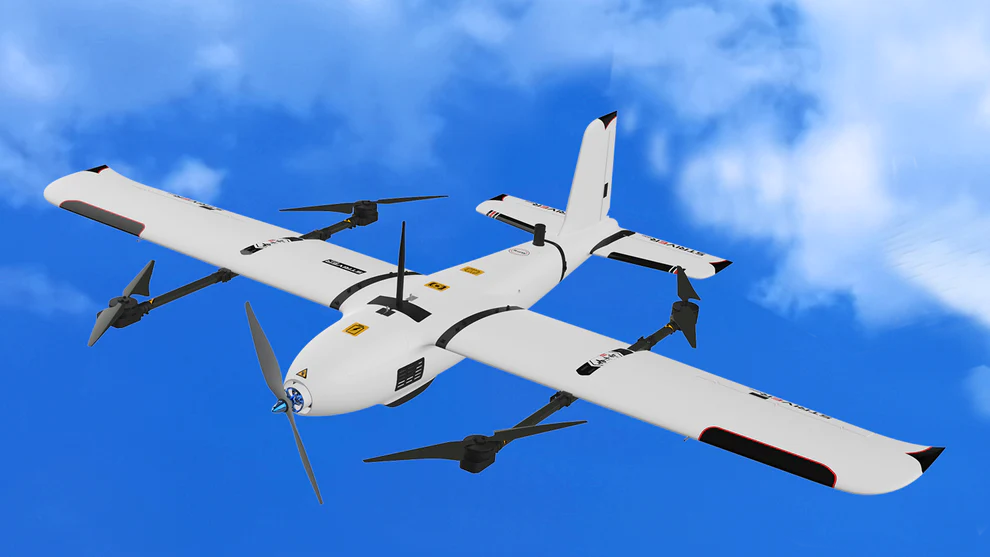
-
Makeflyeasy Fighter VTOL
This aircraft stands out for its payload capacity and extended range, suitable for demanding aerial tasks.
-
Basic Parameters:
- Material: EPO, EVA, carbon fiber, etc.
- Wingspan: 2430mm
- Payload: Max 1.5kg
- Disassembly: Tool-less
-
Flight Characteristics:
- Range: 150km
- Wind Resistance: Class 5
- Recommended Flight Speed: 19~20m/s
-
Features:
- Long-range capabilities
- Robust construction for durability
- Spacious load compartment
-
Pros and Cons: Offers a higher payload capacity than the Freeman 2300 and Striver, with a focus on longer range missions.
-
Buy URL: Makeflyeasy Fighter VTOL
-
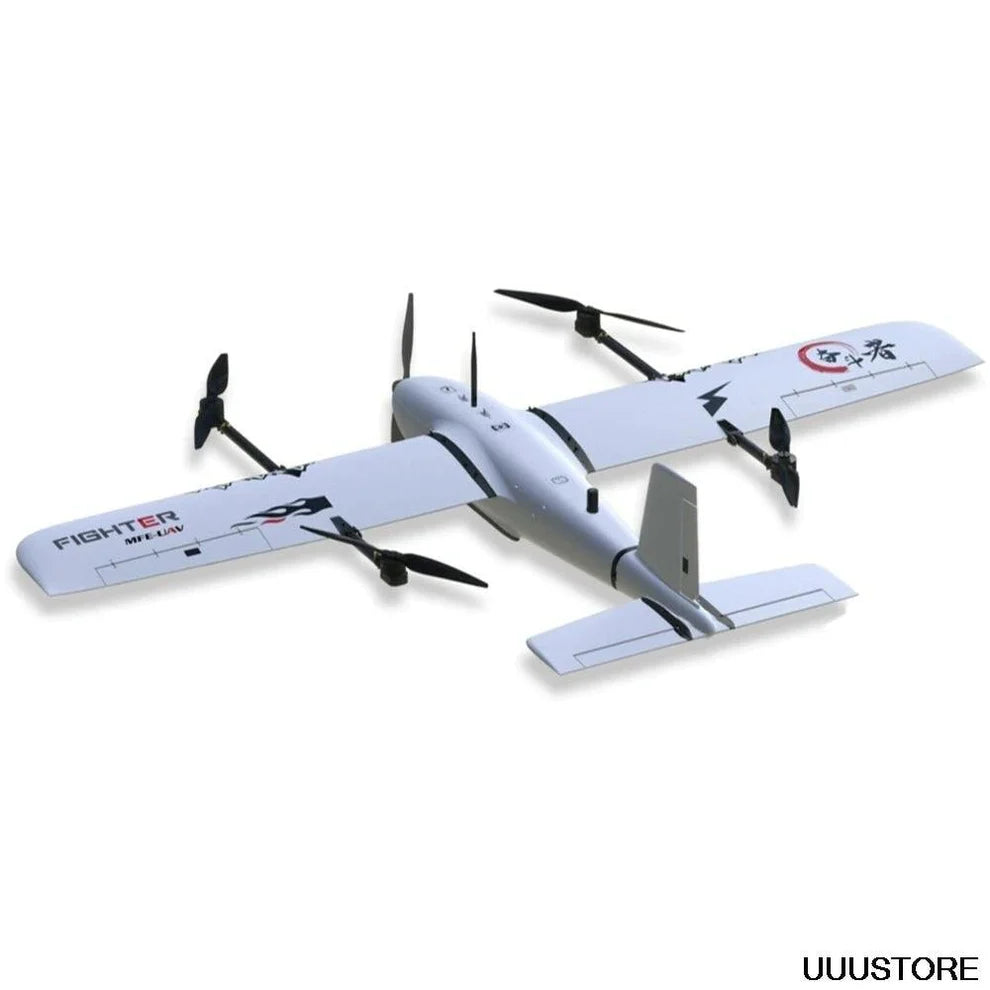
-
Makeflyeasy HERO VTOL
The HERO VTOL excels in both inspection and surveying applications, offering impressive endurance and range.
-
Basic Parameters:
- Material: EPO, carbon fiber, aviation aluminum alloy, etc.
- Wingspan: 2180mm
- Max Payload: 1kg
- Disassembly: Tool-less quick disassembly
-
Flight Characteristics:
- Maximum Range: 144km
- Endurance: Up to 136 minutes
- Wind Resistance: Class 5
- Cruising Speed: 17-22m/s
-
Features:
- High endurance for extended missions
- Durable and lightweight design
- Versatile for both mapping and monitoring tasks
-
Pros:
- Long flight time and range
- Suitable for various payloads and applications
-
Cons:
- Requires careful handling due to its sophisticated design
-
Buy URL: Makeflyeasy HERO VTOL
-
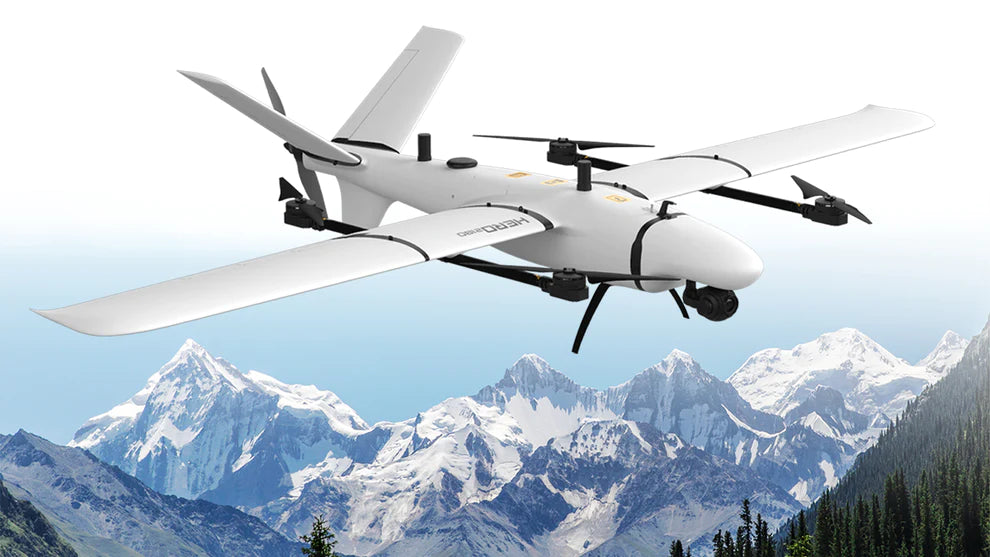
-
OMPHOBBY ZMO VTOL RC AirPlane
The OMPHOBBY ZMO is a user-friendly and versatile VTOL aircraft, ideal for FPV (First-Person View) enthusiasts and hobbyists.
-
Features:
- VTOL capability with simple controls
- One-click Return to Home and Stabilization with GPS
- Built-in HD video transmission for FPV
- Quick assembly and easy servo connects
-
Flight Performance:
- Max Speed: 110kph/69mph
- Max Flight Range: 40km/25mi
- Flight Time: Up to 60 minutes
-
Pros:
- Easy to use for beginners and hobbyists
- Great for FPV flying with HD transmission
-
Cons:
- Limited payload capacity compared to more professional models
-
Buy URL: OMPHOBBY ZMO VTOL RC AirPlane
-

-
Skyeye 2930mm VTOL
The Skyeye is a robust and high-performance aircraft, well-suited for long-duration missions with significant payload requirements.
-
Basic Parameters:
- Wingspan: 2930mm
- Maximum Take-off Weight: 28kg
- Payload Capacity: 3-5kg
-
Flight Characteristics:
- Flight Time: 1.5-3 hours
- Max Speed: 120km/h
- Stall Speed: 65km/h
- Fuel Tank: 5.5L
-
Features:
- Long flight time and high payload capacity
- Full carbon fiber construction for durability
- Versatile for various long-range missions
-
Pros and Cons: The Skyeye stands out for its extended flight time and payload capacity, but its large size and complex operation may not be suitable for all users.
-
Buy URL: Skyeye 2930mm VTOL
-
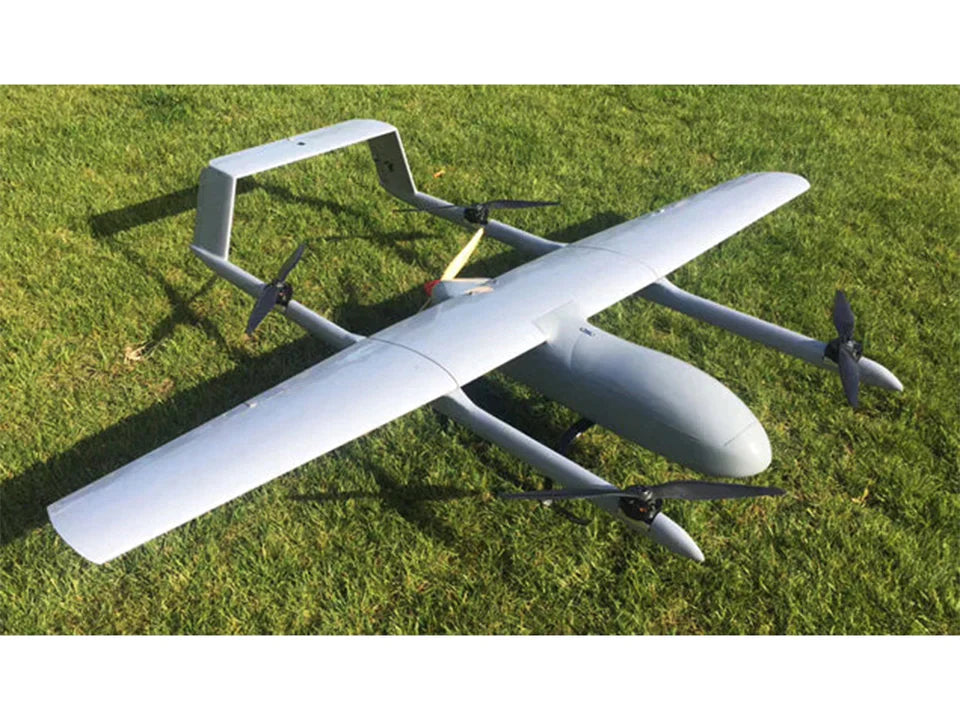
-
SkyWalker VT265 VTOL
The SkyWalker VT265 is a high-performance aircraft designed for durability and efficiency, suitable for a variety of missions.
-
Basic Parameters:
- Material: Carbon fiber composite
- Wingspan: 2650mm
- Maximum Payload: 2.5kg
- Disassembly: Tool-free
-
Flight Characteristics:
- Maximum Cruising Range: 260km
- Endurance: Up to 210 minutes
- Maximum Flight Speed: 30m/s
- Wind Resistance: Level 9 for fixed wing, Level 5 for VTOL stage
-
Features:
- High-strength composite materials for durability
- Fluid design for reduced flight resistance
- Excellent endurance and payload capacity
-
Pros:
- Ideal for extended range missions
- Robust construction suitable for various environments
-
Cons:
- Its size and complexity might require experienced handling
-
Buy URL: SkyWalker VT265 VTOL
-

-
CUAV Raefly VT370 VTOL
The VT370 stands out with its hybrid power system and impressive flight time, making it a top choice for extended missions.
-
Basic Parameters:
- Layout: Tandem wing
- Power: Electric and gasoline hybrid
- Takeoff Weight: 35kg
- Maximum Payload: 15kg
-
Flight Characteristics:
- Battery Life: 10 hours
- Cruising Speed: 24-40m/s
- Maximum Flight Altitude: 5000m
- Wind Resistance: Level 6
-
Features:
- Gasoline-electric hybrid for extended flight time
- Tandem wing design for increased lift
- Advanced sensors and redundant IMUs for safety
-
Pros:
- Exceptional endurance and payload capacity
- Versatile for various demanding applications
-
Cons:
- Complexity of the hybrid system might require specialized knowledge
-
Buy URL: CUAV Raefly VT370 VTOL
-

-
CUAV Raefly VT260 VTOL
A model known for its efficient performance and carbon fiber construction, ideal for surveying and mapping tasks.
-
Basic Parameters:
- Material: Carbon fiber composite
- Wingspan: 2650mm
- Maximum Payload: 2.5kg
-
Flight Characteristics:
- Maximum Range: 260km
- Endurance: Up to 210 minutes
- Economic Cruising Speed: 19~22m/s
-
Features:
- Lightweight yet durable construction
- Efficient cruising speed for extended missions
- Tool-free disassembly for easy transport
-
Pros:
- Excellent for long-duration surveying
- High-quality build for reliable performance
-
Cons:
- Limited payload capacity compared to some larger models
-
Buy URL: CUAV Raefly VT260 VTOL
-
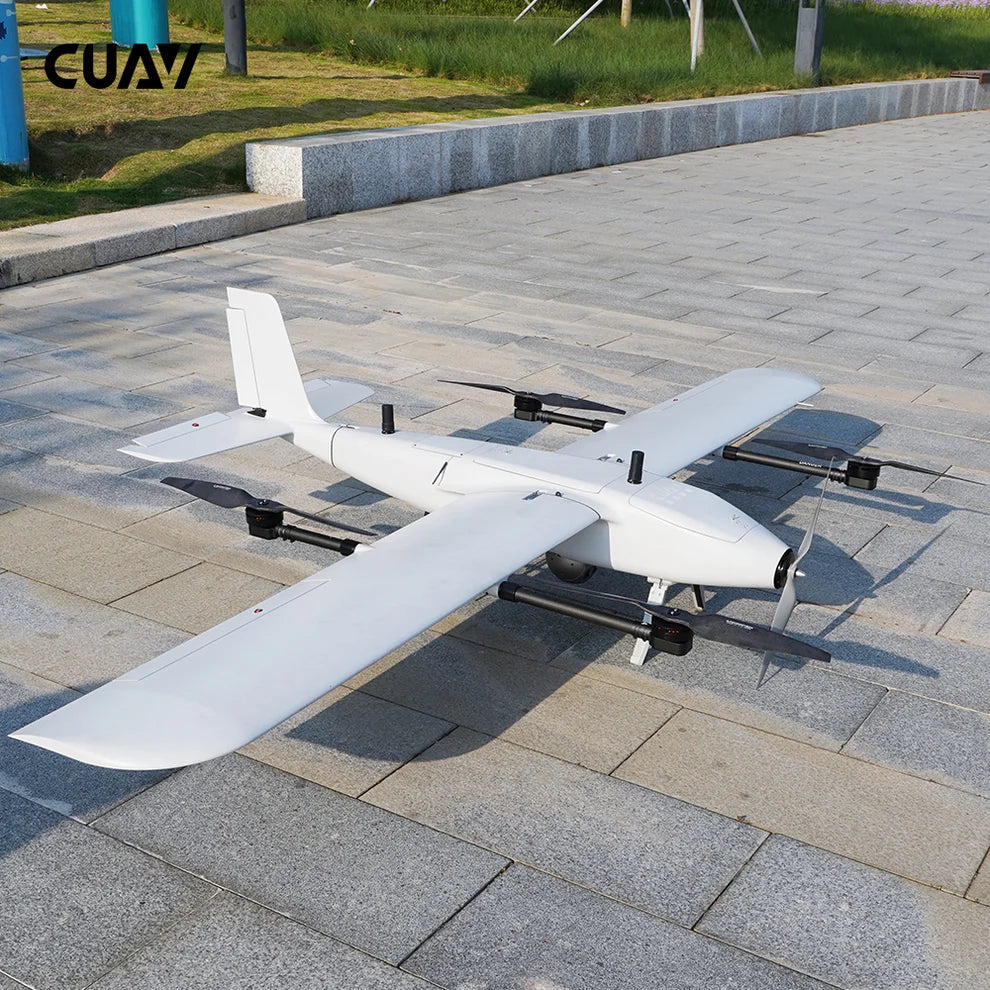
-
CUAV Raefly VT290 VTOL
The VT290 is a robust and versatile aircraft, known for its long-range capabilities and advanced features.
-
Basic Parameters:
- Material: Carbon fiber + Kevlar composite
- Wingspan: 2900mm
- Maximum Payload: 5kg
-
Flight Characteristics:
- Maximum Range: 370km
- Flight Speed: Up to 35m/s
- Wind Resistance: Level 6
- Positioning Accuracy: 1.5m (single point); 1cm+IPPM (RTK)
-
Features:
- Durable construction with carbon fiber and Kevlar
- High payload capacity and extended range
- Standard CUAV flight controller for precise navigation
-
Pros:
- Ideal for demanding surveying and mapping missions
- High endurance and payload capacity
-
Cons:
- Requires significant investment and advanced piloting skills
-
Buy URL: CUAV Raefly VT290 VTOL
-
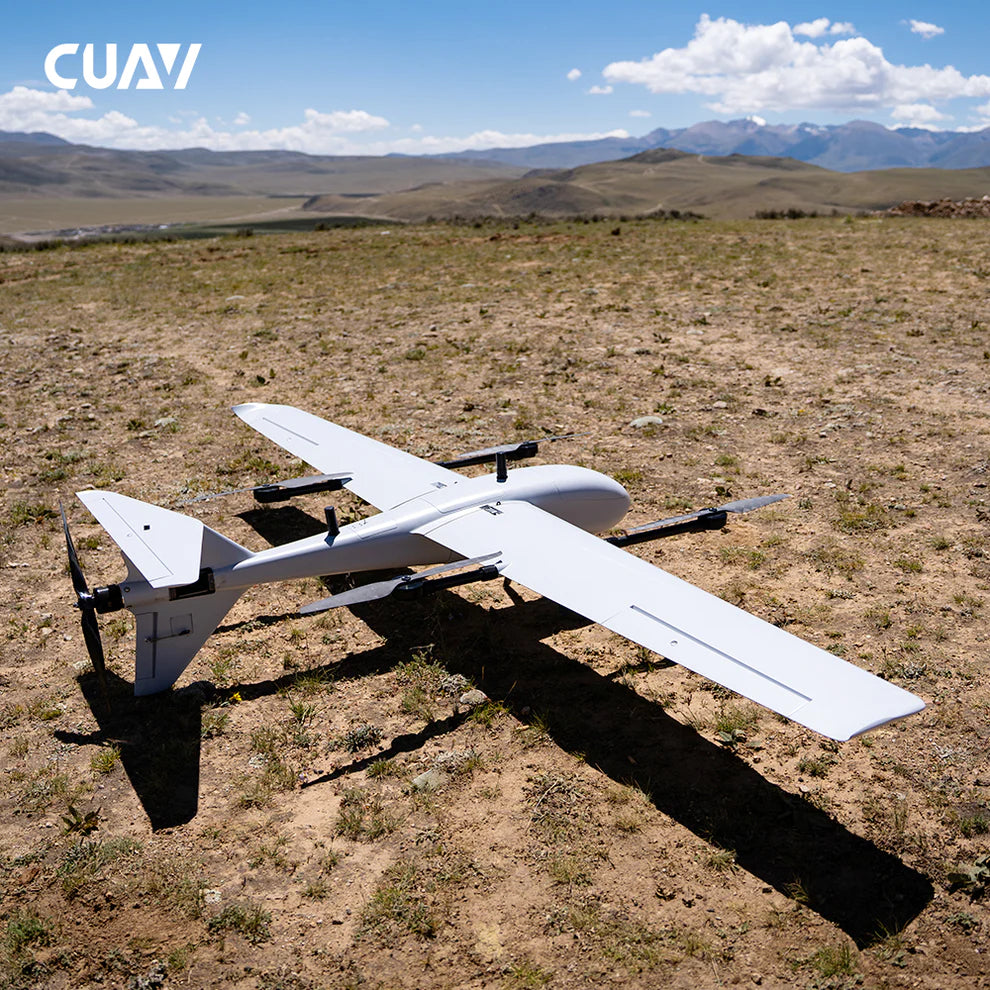
-
CUAV Raefly VT240 Pro VTOL
The VT240 Pro is a state-of-the-art VTOL aircraft, designed for efficiency and precision in various applications.
-
Basic Parameters:
- Material: Carbon fiber + Kevlar composite
- Wingspan: 2438mm
- Maximum Payload: 2kg
-
Flight Characteristics:
- Max Cruising Range: 310km
- Economic Cruising Speed: 18m/s
- Wind Resistance: Level 5
-
Features:
- Lightweight and durable design
- High cruising range for extended operations
- Precise positioning with advanced flight control systems
-
Pros:
- Perfect for long-duration mapping and surveying
- Energy-efficient and reliable performance
-
Cons:
- Limited payload capacity compared to larger models
-
Buy URL: CUAV Raefly VT240 Pro VTOL
-

Section 6: Frequently Asked Questions (FAQ)
-
How do I choose the right VTOL aircraft for my needs? Consider the primary purpose, payload capacity, range, and your level of experience in piloting drones.
-
Are VTOL aircraft difficult to operate? They vary in complexity. Some models are designed for ease of use, while others require specialized training.
-
What are the maintenance requirements for VTOL aircraft? Regular checks and maintenance are crucial, focusing on the propulsion system, control surfaces, and electronics.
Conclusion and Summary
The VTOL aircraft market in 2024 presents a diverse range of options, catering to various needs from hobbyist to professional applications. The key to selecting the right VTOL aircraft lies in understanding specific mission requirements and balancing factors like payload, range, durability, and cost. As technology advances, we can expect even more innovative VTOL designs, offering enhanced capabilities and efficiency.
More VTOL Aircraft Drone: https://rcdrone.top/collections/vtol-drone